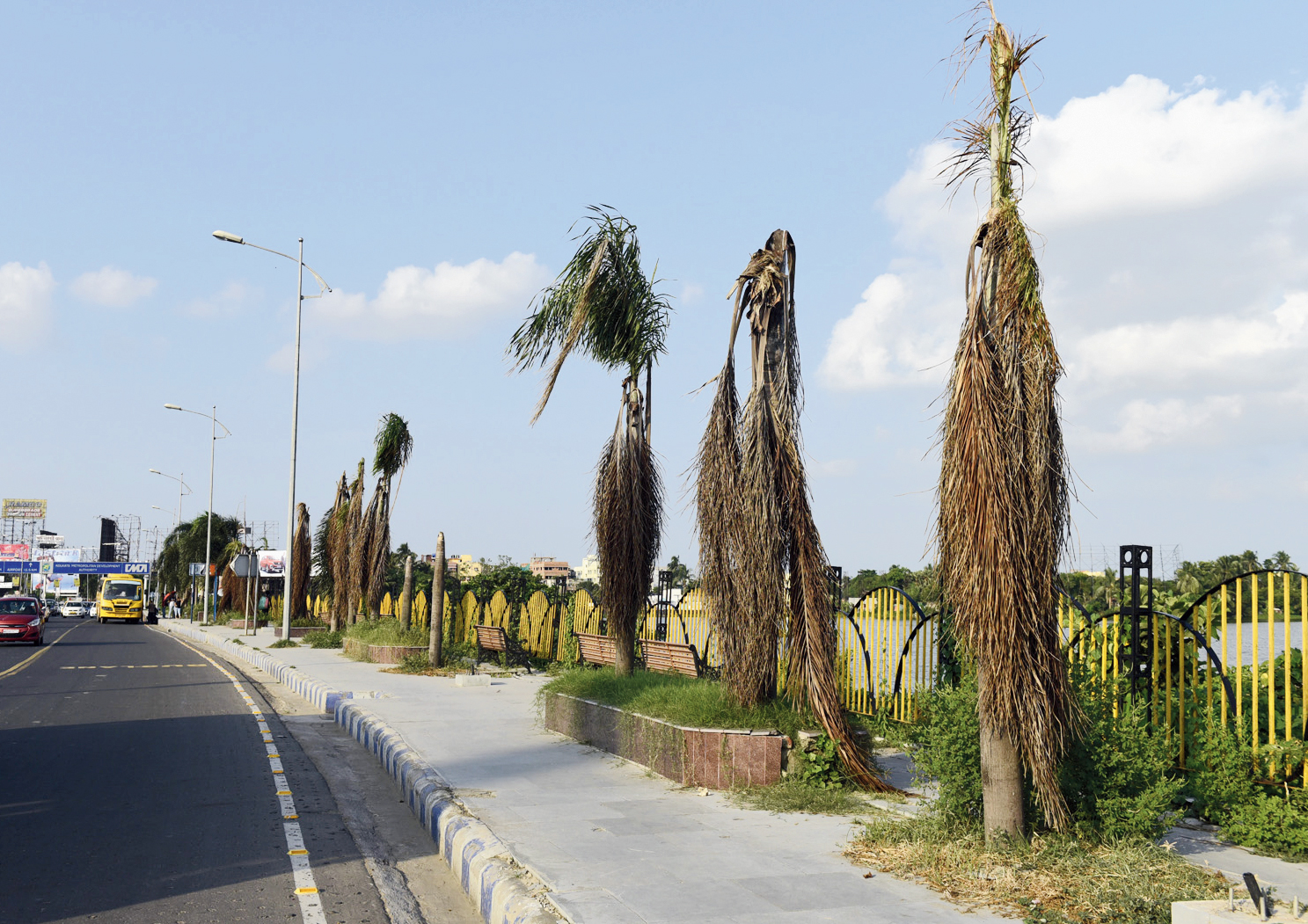More than a dozen palm trees that had been planted along the walkway of Captain Bheri on the EM Bypass have wilted and died.
The long line of dead trees far outnumbers those that still have green canopies on the Science City-bound flank of the EM Bypass.
Even among those that have green leaves, some are turning yellow indicating that they are drying out fast. Several have no canopies left and only stumps stand in their place.
A naturalist said the trees could have had died because of lack of maintenance and improper transplantation.
He said the trees that had died were all brought from other places and planted there.
“These were grown-up trees when they were planted along the Bypass. Grown-up trees need support for some time so that they don’t topple when they are transplanted. But that was not done here,” said another naturalist.
Metro visited the area several times and walked around the stretch and found that almost all the trees have concrete plinths built around them.
Some soil had been left free around trees that have plinths and concrete pavements around them. But the soil was dry and littered with plastic bags and bottles.
Barely a year ago the trees had been planted in a row from the Chingrighata crossing as part of a beautification drive carried out by the Calcutta Metropolitan Development Authority (CMDA), an officer said.

A fallen tree along the Bypass.

a signboard that reads “Captain Bheri beautified and and maintained by KMDA” stands on the walkway with the dead trees.
According to the CMDA officer, the project included laying of concrete pavements on both sides of the Bypass, installing benches facing Captain Bheri, setting up lights and having manicured gardens interspersed by the palm trees.
The palm trees were more than three years’ old when they were planted. This was done to ensure a higher survival rate.
“We had planted grown-up trees so that they could survive. Sadly, that did not happen,” the officer said and added that he was not sure if the trees had been watered regularly.
An officer of the forest department’s urban forestry wing said that such trees had shallow roots that fan out in every direction to provide stability and nutrients to the plant.
He said the trees were quite tough and could live in low water conditions but need space around the roots so that they could spread.
“Unlike rain trees such as shirish, the roots of palm trees fan out. This is why it is imperative to leave the surface around them free. There should not be any concrete work around them,” the officer said.
Arjan Basu Roy, a naturalist and founder of NGO Nature Mates, said that a tree’s nutrition absorbing qualities were disturbed if the roots did not have anything to hold on to.
“This is what such unscientific paving of the footpaths in the city does to the trees,” he said.
Cement blocks the growth of roots, said another naturalist. “There must be a significant amount of space around a tree for the surface roots to grow,” he said.











